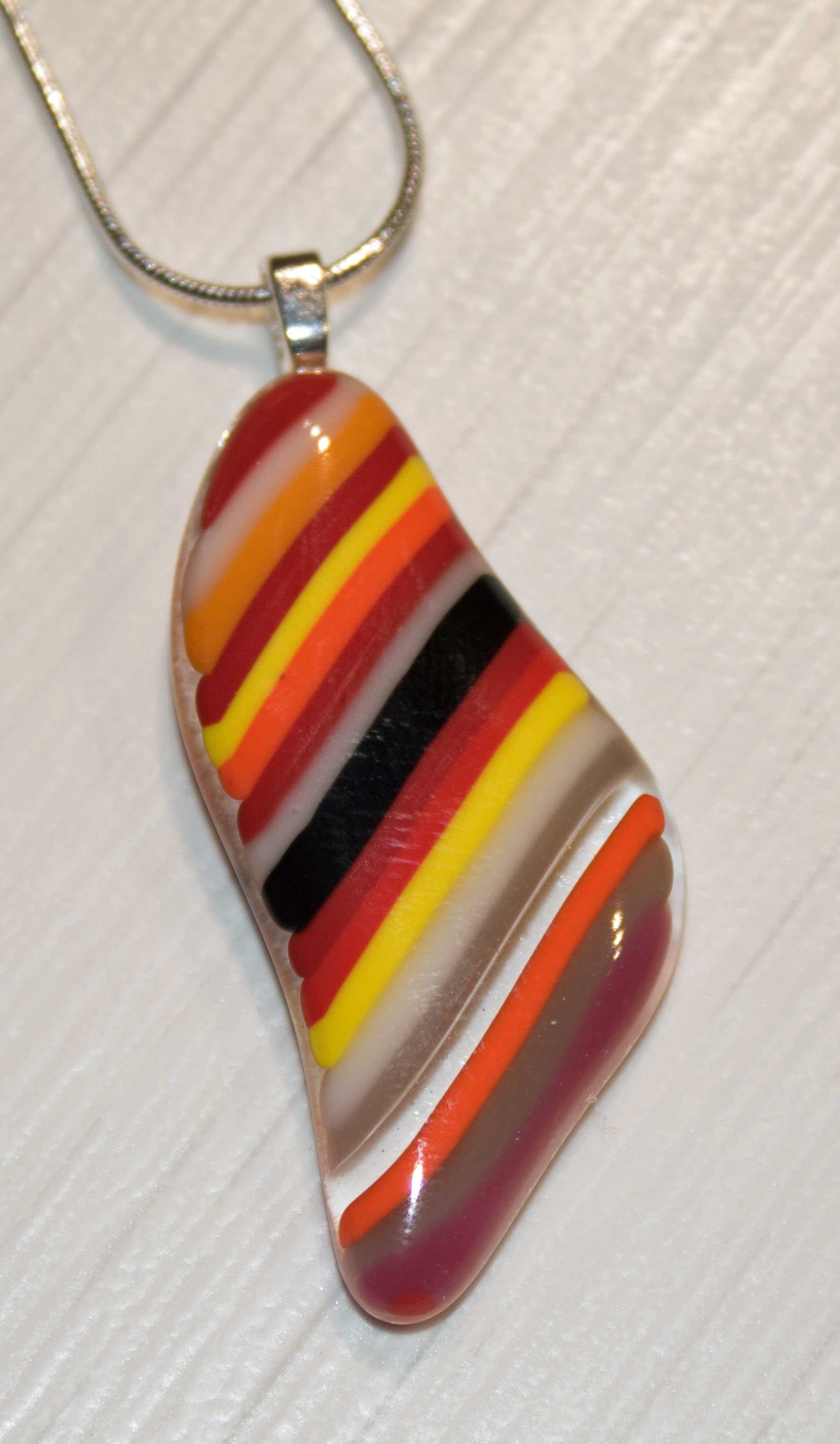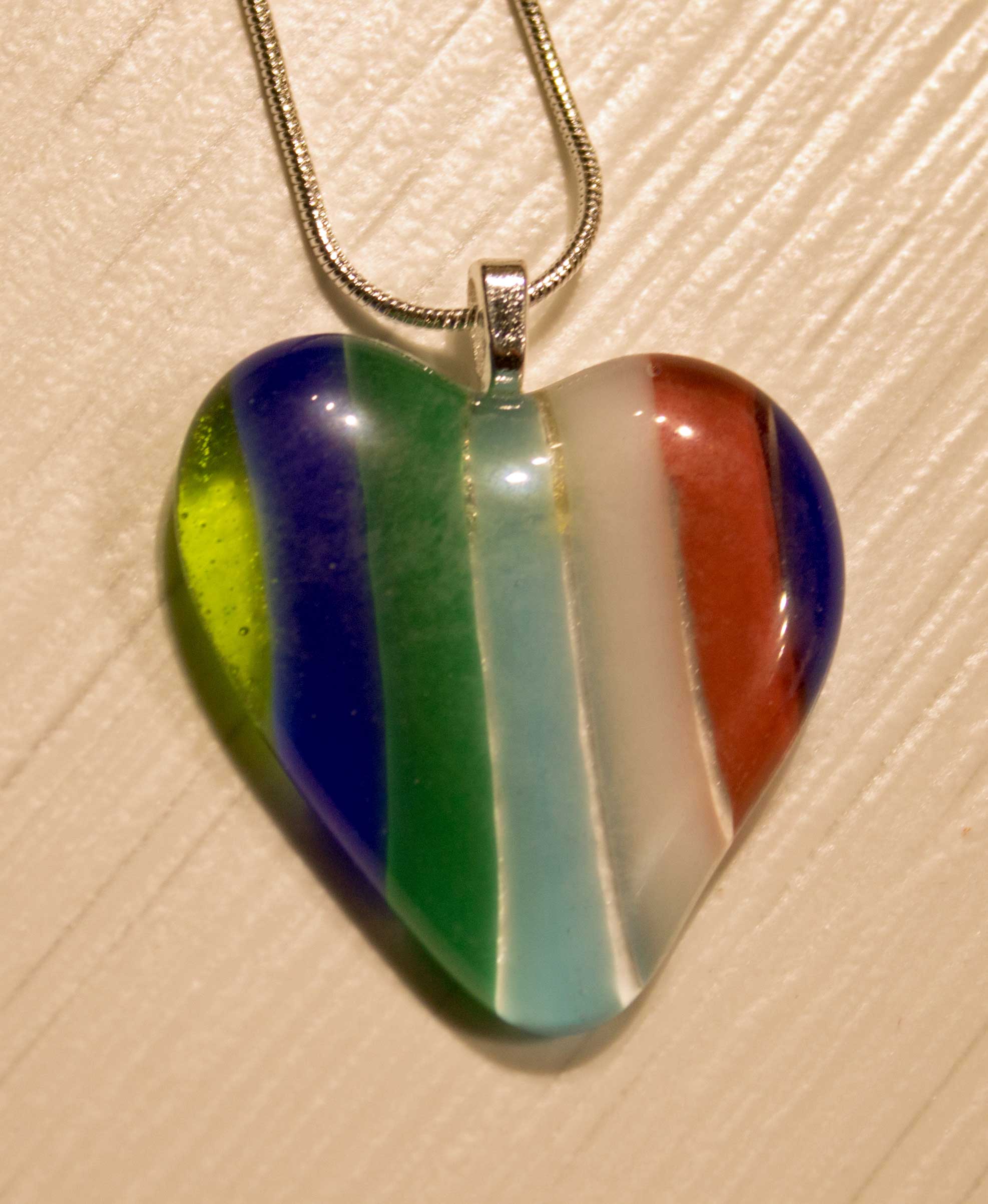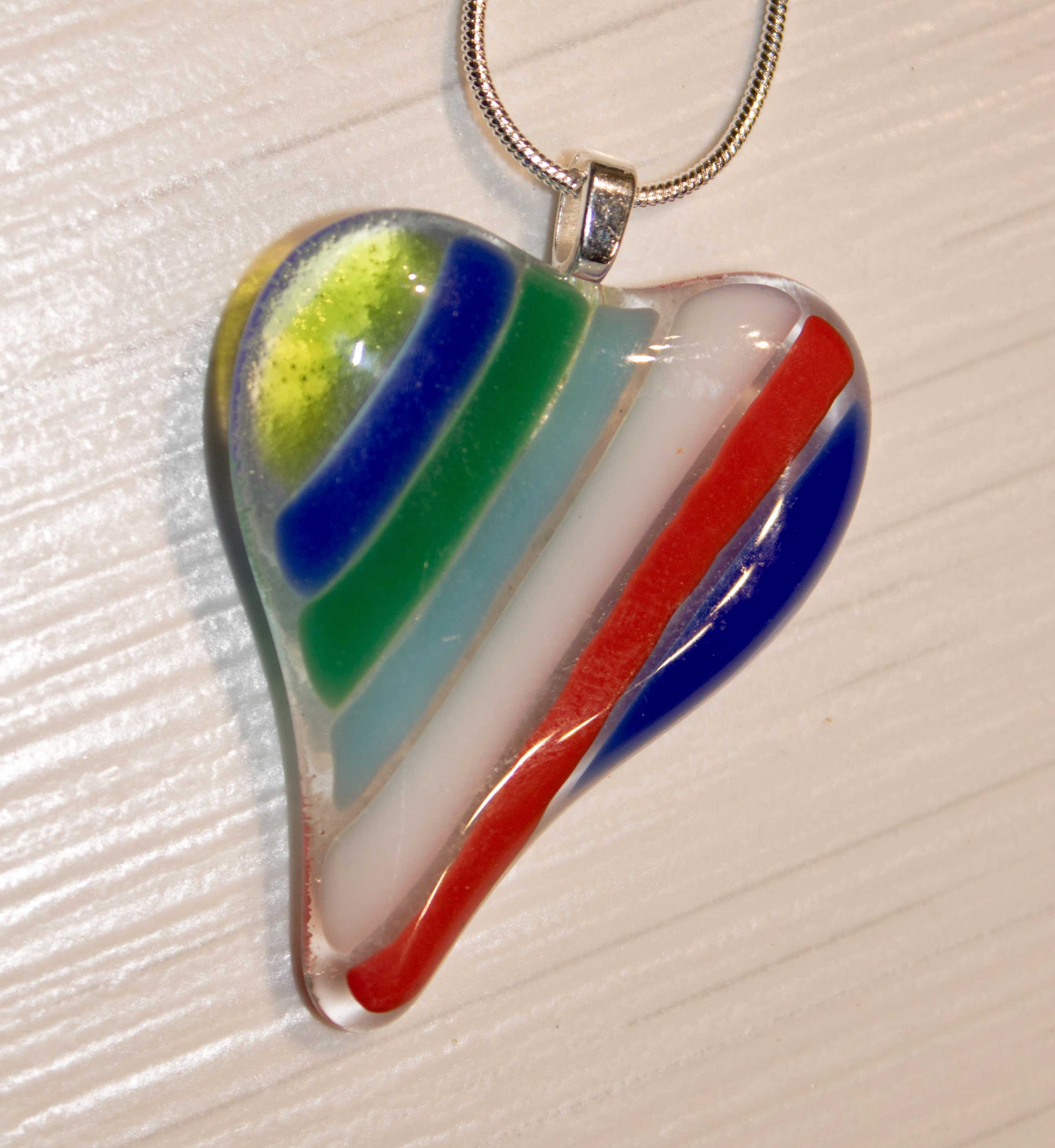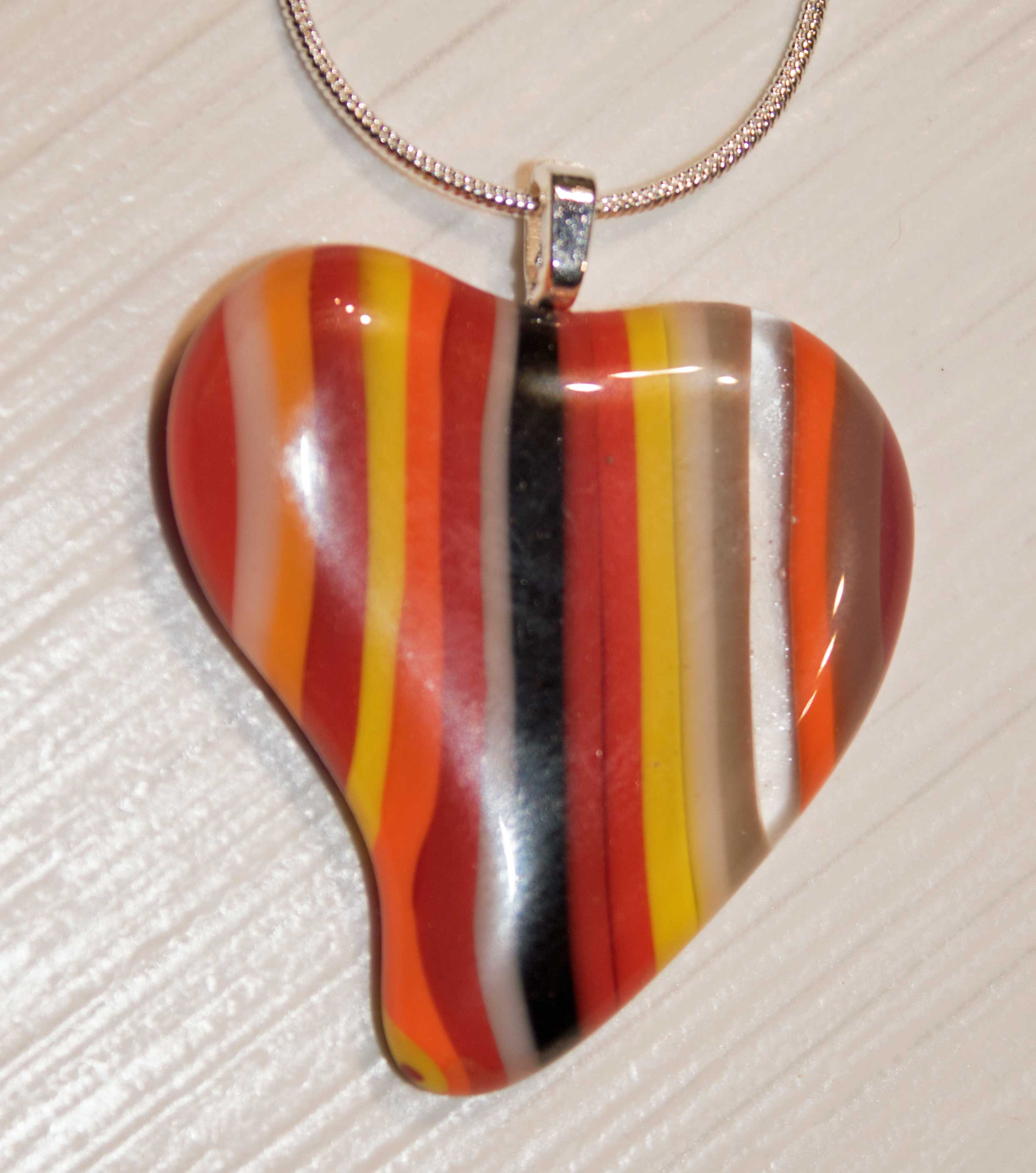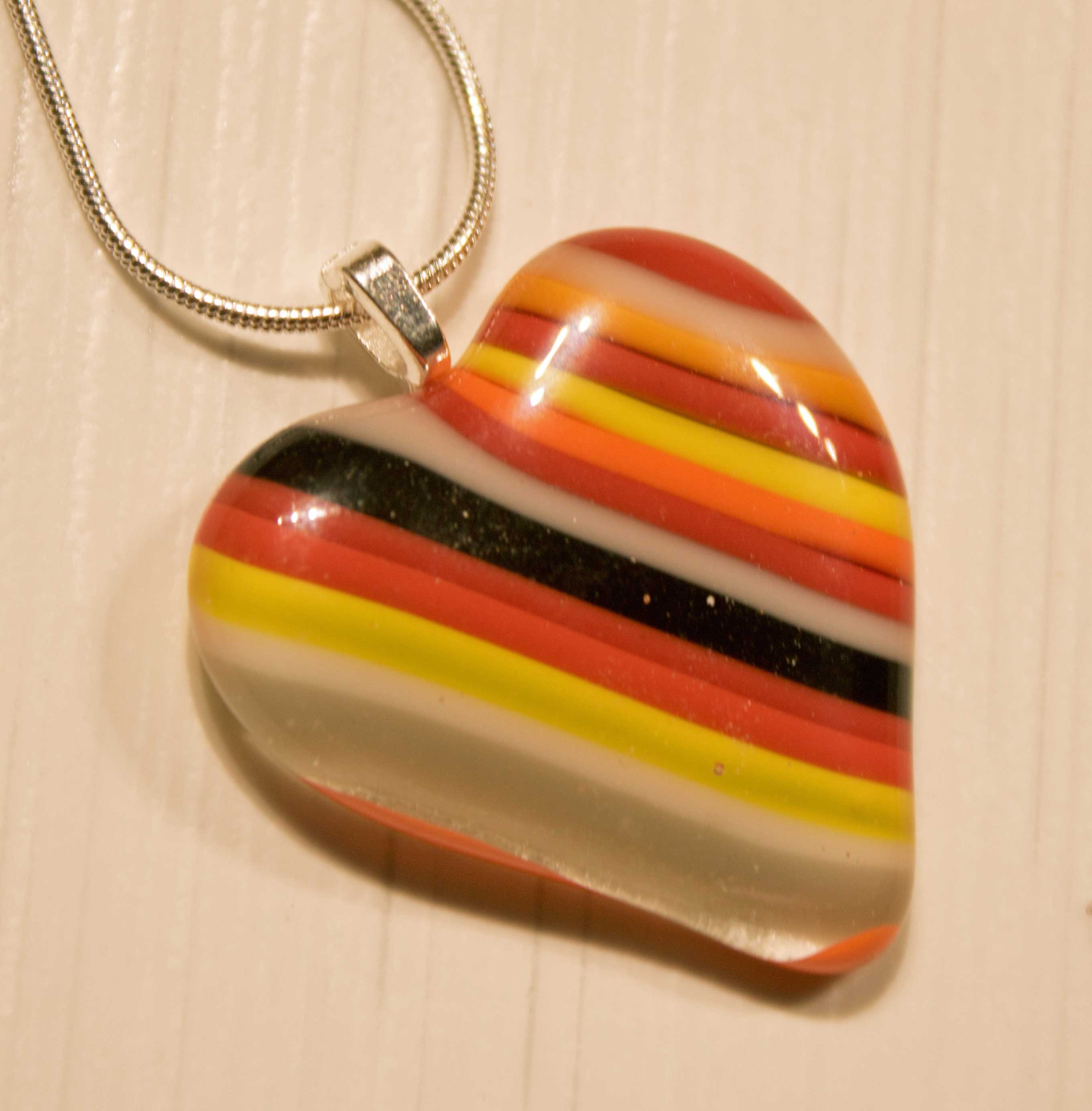Like Tartan Paint, you don't buy striped glass. There are plenty of wonderful abstract designs in glass available for crafting, but stripes...
So we decided to make our own and use it to make some vibrant pendants. Here's what we were aiming for.
This is the process we used from raw glass to finished pendants.
Making the Striped Glass
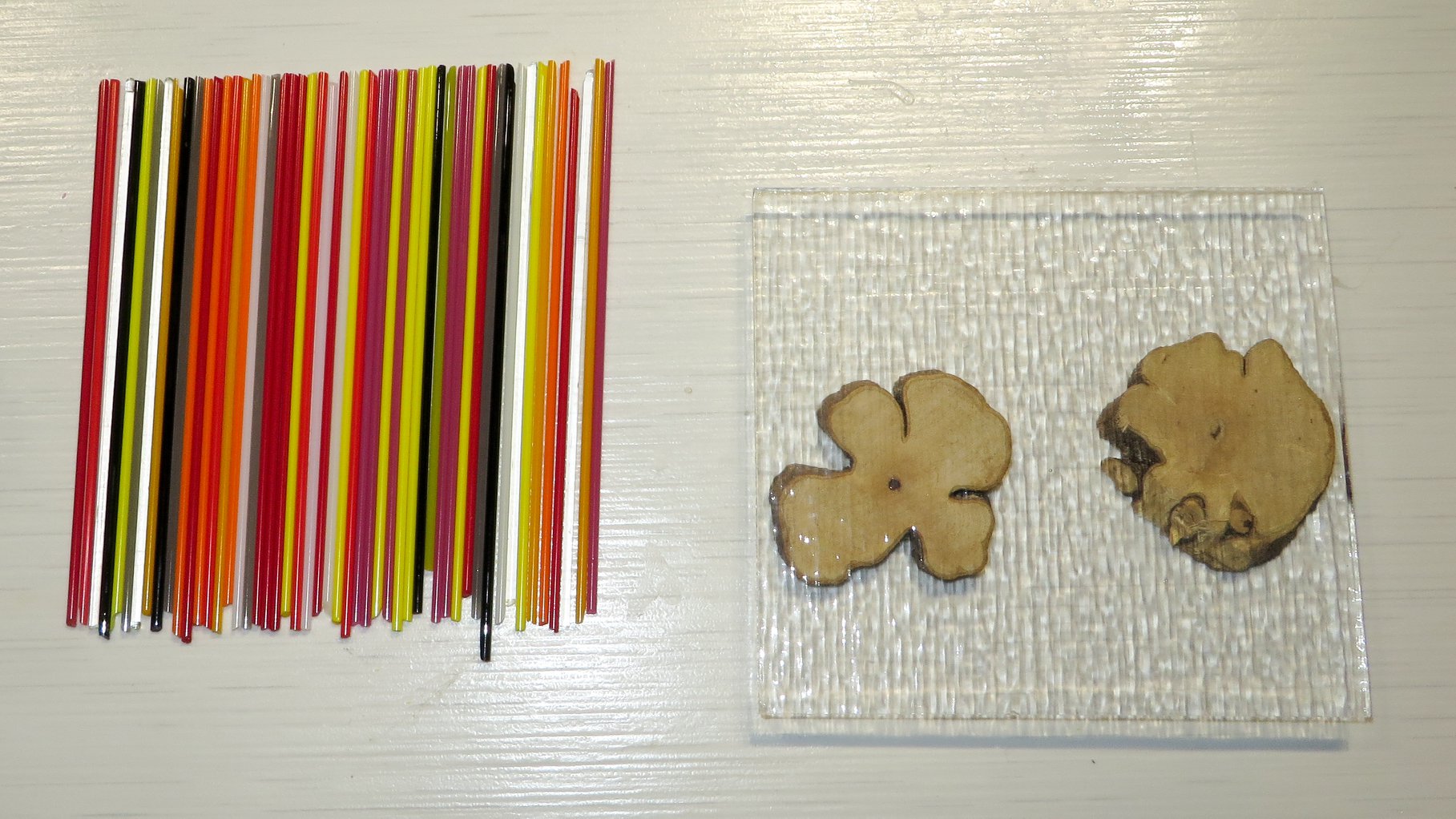
We first assemble our raw materials - just like a cookery recipe.
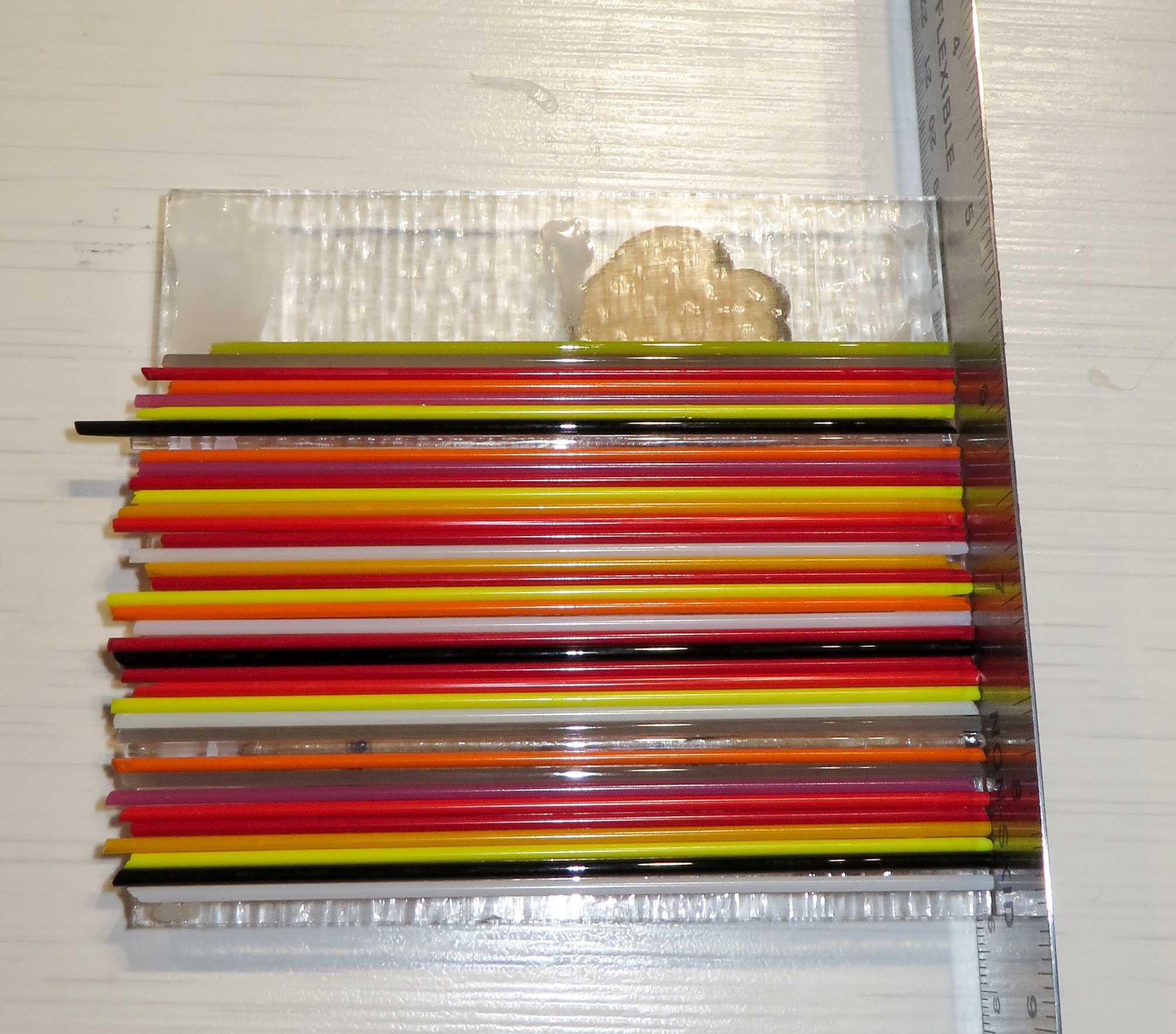
The coloured stripes on the left are 2mm diameter glass rods - Stringers. These come in all sorts of colours. Some are opaque when fired, whilst others are transluscent to some degree or another. These have all been cut to around 10 cm in length - the size of the backing sheet of clear glass.
On the right of that picture is our base sheet of clear glass. This is 10cm square. The pieces of wood you can see are just slices that I use to lift the base glass off the worktop and make it easier to pick things up later.
The picture on the right shows how we have laid out the stringers on the base clear glass - all lined up. i just use a line of glue at each side of the base glass to hold things in place. The glue burns off in the kiln and leaves no residue.
The Whole contruction goes into the kiln for a Full Fuse, going up to around 800c and back down to room temperature in a carefully programmed sequence of heating, holding, and cooling. This makes sure that the piece fuses evenly and that all the stresses involved with the heating cycle are allowed to relax.

And here is the result out of the kiln.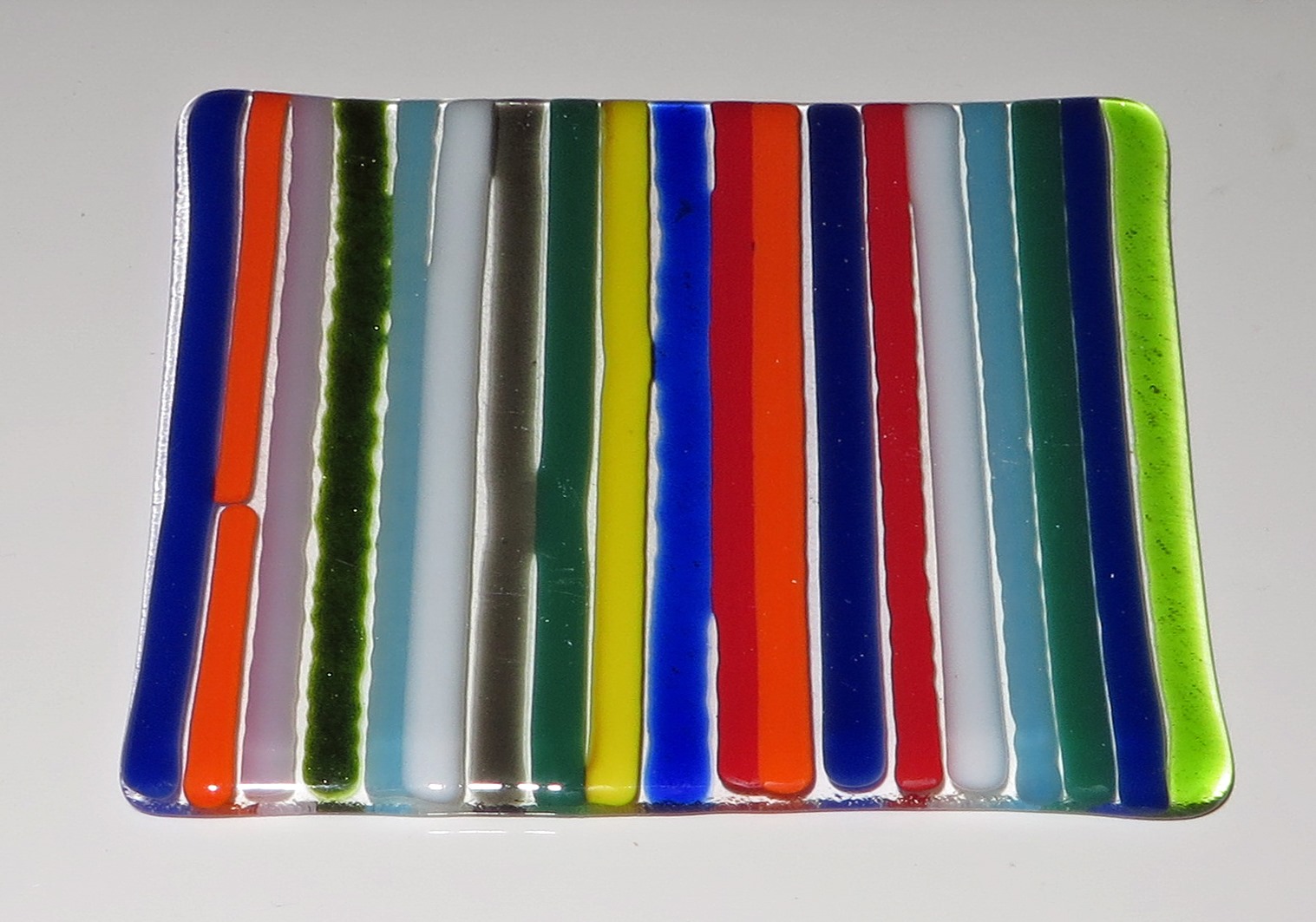
All the stringers have fused together and have fused to the base sheet of glass - they can't be separated now.
The glass has shrunken slightly as it tries to get to 6mm thick - you can see how it is slightly bowed in along the bottom side.
We can also use the same technique to make glass with slightly wider stripes using 4 x 2 mm glass ribbons.
The glass sheet is now ready for cutting.
Cutting and Shaping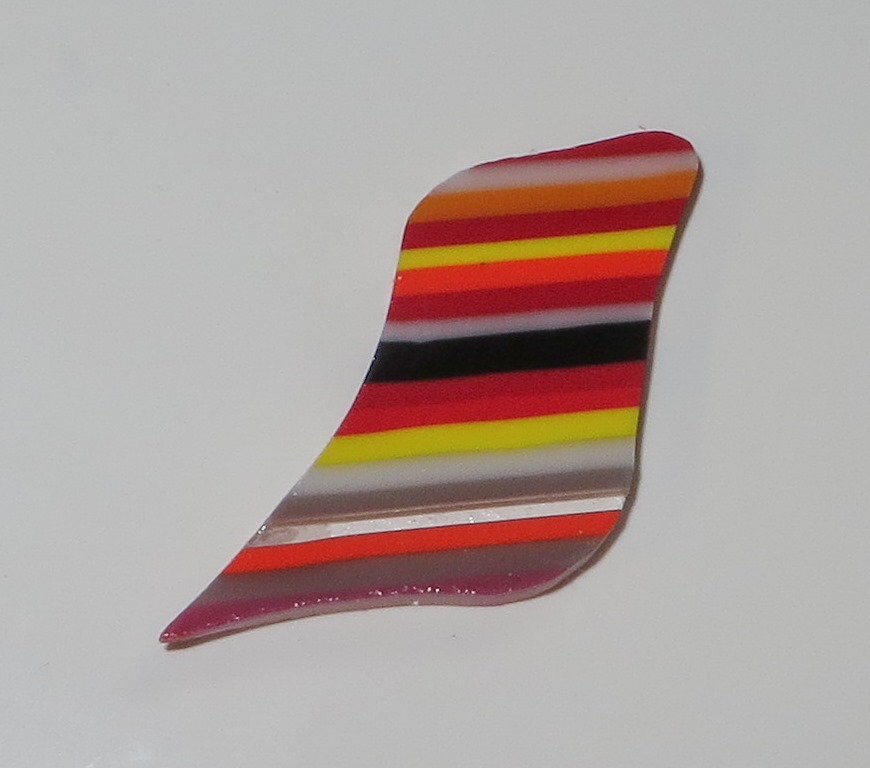
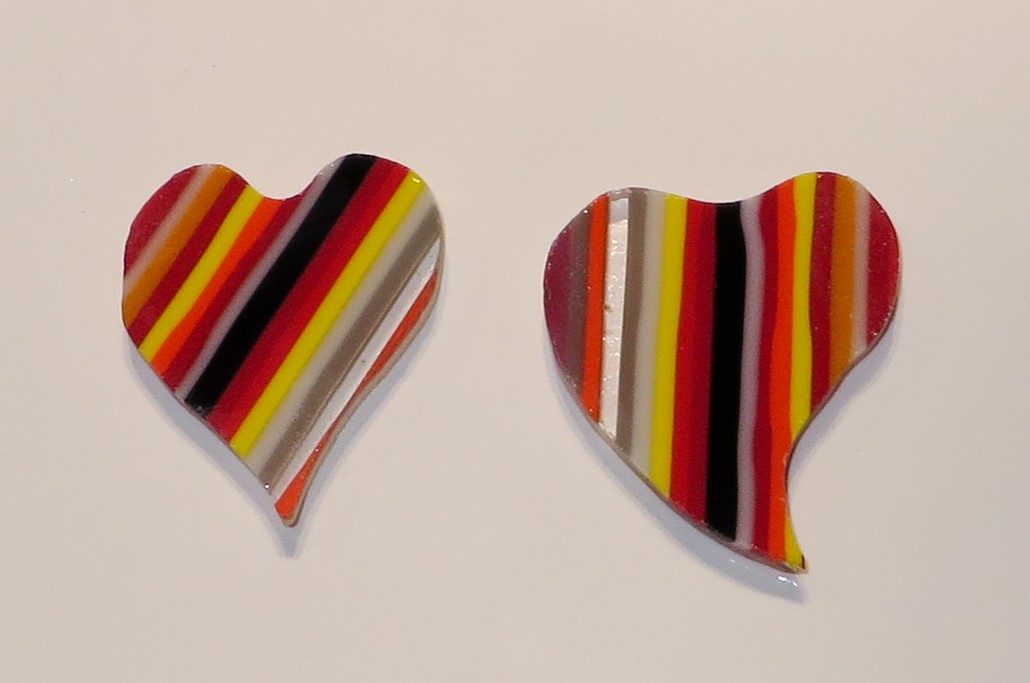 All of our pendants are cut by hand using a simple glass cutter. In some cases we use a wet grinder to smooth edges.
All of our pendants are cut by hand using a simple glass cutter. In some cases we use a wet grinder to smooth edges.
It's relatively easy to get smooth and shallow curves, but the sharper curves, such as the indentation at the top of the left-hand heart benefits from careful use of the grinder.
This process leaves the shaped piece with very sharp edges - not good for your clothes or skin. So the next process is another fuse to smooth things off.
Final Fusing & Finishing
The piece goes back into the kiln for another full fuse which rounds off the edges and smooths out any nicks or scratches resulting from the cutting and shaping process. When they are out of the kiln and cooled we glue on a metal bail through which the necklace is threaded. The results are lovely!
